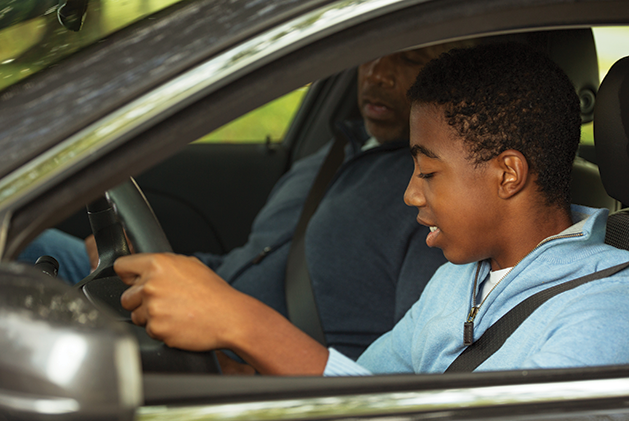
As teens get their first glimpse of mobile adulthood, parents hold their breaths. Learning how to drive
is an exciting, and at the same time, difficult topic. There are privileges to becoming a licensed driver, and precautions for young people and their parents.
For families with members approaching driving age, enrolling in a driver’s education class is a good first step. Most classes include a state approved 30 hours of classroom instruction along with six hours of behind-the-wheel time—one-on-one teaching by an instructor in a moving vehicle. These sessions often reinforce defensive and distraction-free driving. Some classes also provide instruction time for parents that includes insurance information.
After completing driver’s education classes, students are certified to take a written test. If they pass, they become eligible for a learner’s permit which allows them to practice driving with a parent, guardian or other adult over the age of 21. Six months later, and after their 16th birthday, teens can sign up for the nerve-wracking, dreaded driver’s test.
Because driving is such a big step in the life of a teen, some parents, like Shelly Halverson, create driving contracts both parents and their teen signs.
“Driving is such a big responsibility and a privilege too. We wanted our children to understand the importance of being able to drive,” Halverson says. “Stating the ground rules in a contract that we all agreed to seemed to make sense. We actually kept the contract posted, in case there were ever any clarifications needed. If situations came up, we knew how they would be handled. Fortunately …we never had any difficulties. We think they knew that we were serious, and they would lose the privilege if they broke the rules.”
The state of Minnesota has some rules as well: for the first six months after the provisional license is obtained, only one passenger under the age of 20 who is not an immediate family member is allowed to ride in the car without another qualified adult and there are also nighttime driving limitations based on destination. And, texting or calling while driving is illegal until the completion of the first year of the provisional period, with the exception of dialing 911.
Learning how to drive is scary, however there are many driving classes in the area to choose from. Teens can also wait until they are 18 to learn; avoiding the cost of higher insurance rates and class instruction. Added maturity at 18 can help the process go more smoothly, along with, as one Maple Grove family found, clear expectations.
Training Wheels
Driver’s education classes in the Maple Grove area with classroom instruction and behind-the-wheel training:
Teens Incorporated, $449
Safeway Driving School, $420
Passion Drive, $229
Maple Grove Driving School, $449
Rules of the Road
Halverson family driving rulesmake expectations clear.
All “drives” must be cleared with parents before departure
Call before changing locations
No freeway driving for the first six months after obtaining a license
Curfew laws apply
One passenger allowed
Keep the car clean
No hats or distracting music (or distracting passengers)
Absolutely no cell phone use
Traffic violations and accident damage are paid for by the teen driver
A “B” grade point average must be maintained (to keep car insurance low)









